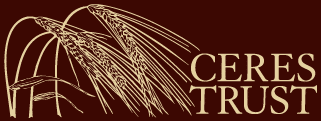Dual flow continuous culture fermentation of organic BMR sorghum-sudangrass and teff grass to determine digestibility of forages in an organic dairy grazing system
Investigator: Kathryn E. Ruh, Department of Animal Science, University of Minnesota
[email protected]
Collaborators: Bradley Heins, Ph.D., University of Minnesota – WCROC, Morris, MN
Project Period: 2015-2016
View/Download Full Report in PDF Format
Project Summary
Organic dairy cattle must have at least 120 days on pasture and at least 30% of their dry matter intake must come from pasture forage. Typically, perennial cool season grasses are used in pastures in the upper Midwest, but these grasses experience a decreased period of growth in summer. Warm season grasses have been suggested as a solution to pasture productivity during the decreased growth rate of cool season grasses. In this study the warm season grasses BMR sorghum sudangrass and teff grass were compared to a cool season grass pasture mixture and alfalfa in a dual-flow continuous culture rumen fermentation system to determine forage quality.
Problem addressed
Pasture management is a very important component of organic dairy farming. Warm season grasses may provide a solution to the summer slump that occurs with cool season grasses in organic dairy pastures. This project will evaluate effects of organic pasture forage digestibility of warm season grasses (BMR sorghum-sudangrass and teff grass), as well as cool season perennial ryegrass and alfalfa that are used in pasture systems in the Midwest. Results will help organic farmers that graze dairy cows to make better pasture management decisions for their cattle. Results were disseminated to stakeholders through extension publications, research center field days, and through online educational materials.
Project Objective
Our objective is to evaluate the effects of organic pasture forage digestibility of warm season grasses (BMR sorghum-sudangrass and teff grass) compared to cool season pasture species (perennial ryegrass and alfalfa) that are used in pasture systems in the Midwest.
